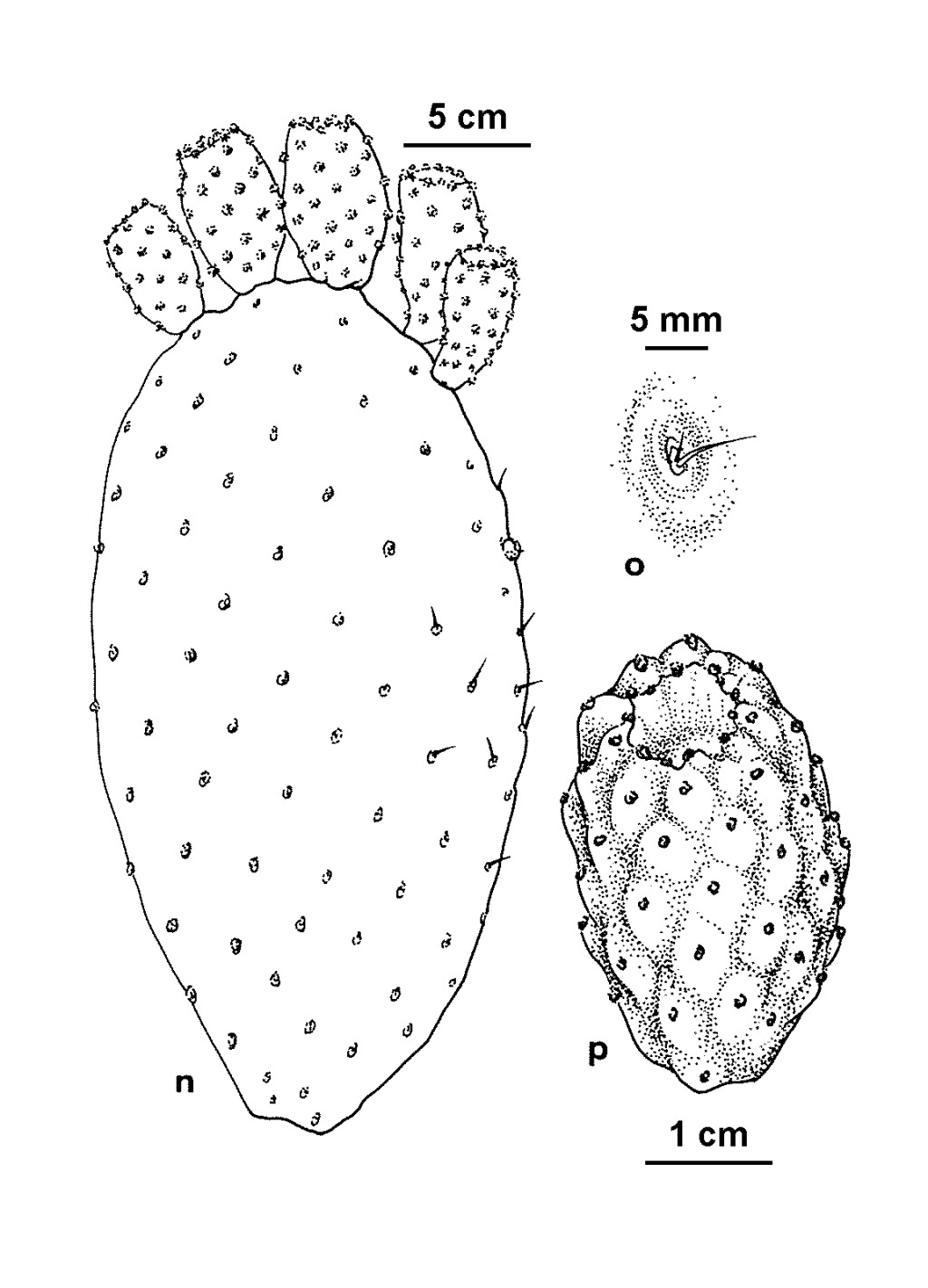Opuntia ficus-indica
(L.) Mill. Indian FigErect shrub, to c. 5 m high, trunk often well-developed. Terminal cladodes compressed, obovate to broadly obovate, thick (2–3.2 cm through), 25–50 cm long, 10–20 (–40) cm wide, glabrous, dull, green, grey-green or glaucous; areoles 30–75 per cladode face, c. 2–5 cm apart, filled with brownish wool; glochids yellow or yellow-brown, to 3 mm long, mostly absent from older cladodes; spines absent, or up to c. 9 per areole, the longest 0.4–4.1 cm long, 0.5–1.2 mm wide near base, subappressed, deflexed or spreading, straight, white to pale yellow. Flowers 7–10 cm diam.; sepaloids yellow with reddish or green median stripes; petaloids spreading, yellow or orange-yellow, tinged pink; stamens pale yellow; style whitish, stigmas green; hypanthium strongly tuberculate. Fruit barrel-shaped, 5–9 cm long, 4–9 cm diam., smooth, with few short, deciduous spines, depressed at apex, yellow, orange or red, juicy. Flowers late spring–summer.
MuM, VVP, RobP, GipP, OtP, CVU. Also naturalised WA, NT, SA, Qld, NSW, ACT. Probably indigenous to Mexico. Commercially and domestically grown for its edible fruits, with most occurrences in Victoria near cultivated plants or from garden refuse.
2 variants have been noted in Victoria: one is spineless or has 1(–4) appressed or deflexed spines per areole, scattered over cladode face, the spines being short (4–19 mm long) and thin (0.5–0.8 mm diam.); the other has numerous spreading spines (3–9 on most areoles) that are long (to 41 mm) and stouter (1–1.2 mm diam.). The former is the more common in cultivation.
Stajsic, V.; Carr, G. W. (1996). Cactaceae. In: Walsh, N.G.; Entwisle, T.J., Flora of Victoria Vol. 3, Dicotyledons Winteraceae to Myrtaceae, pp. 119–129. Inkata Press, Melbourne.
 Spinning
Spinning




